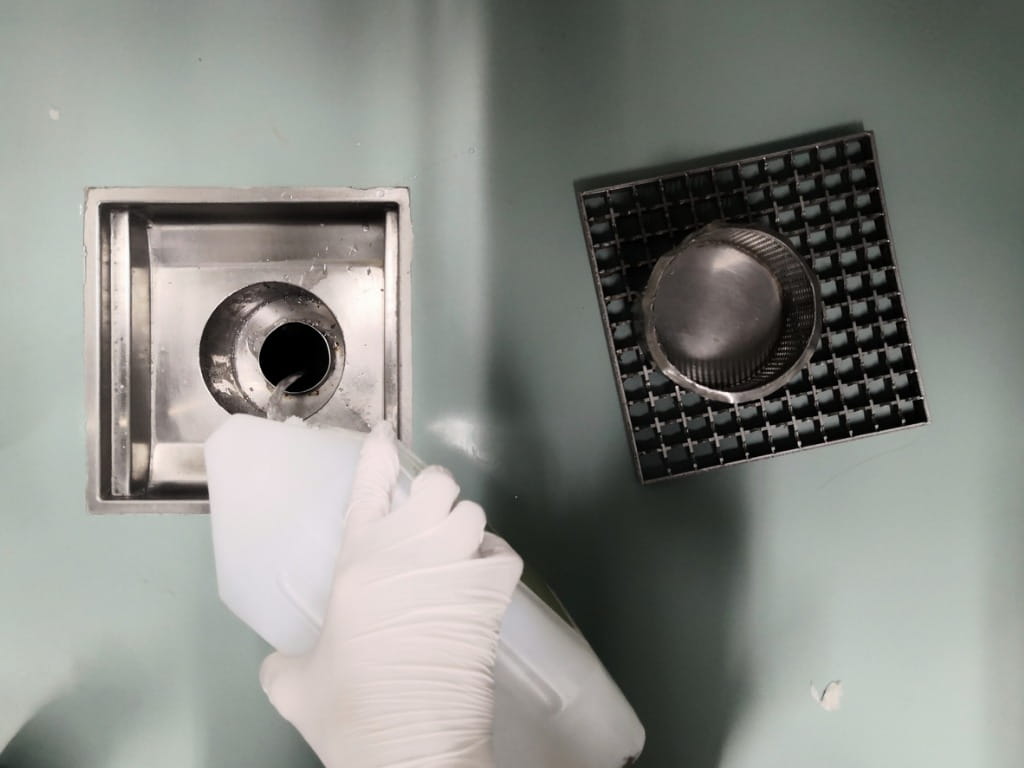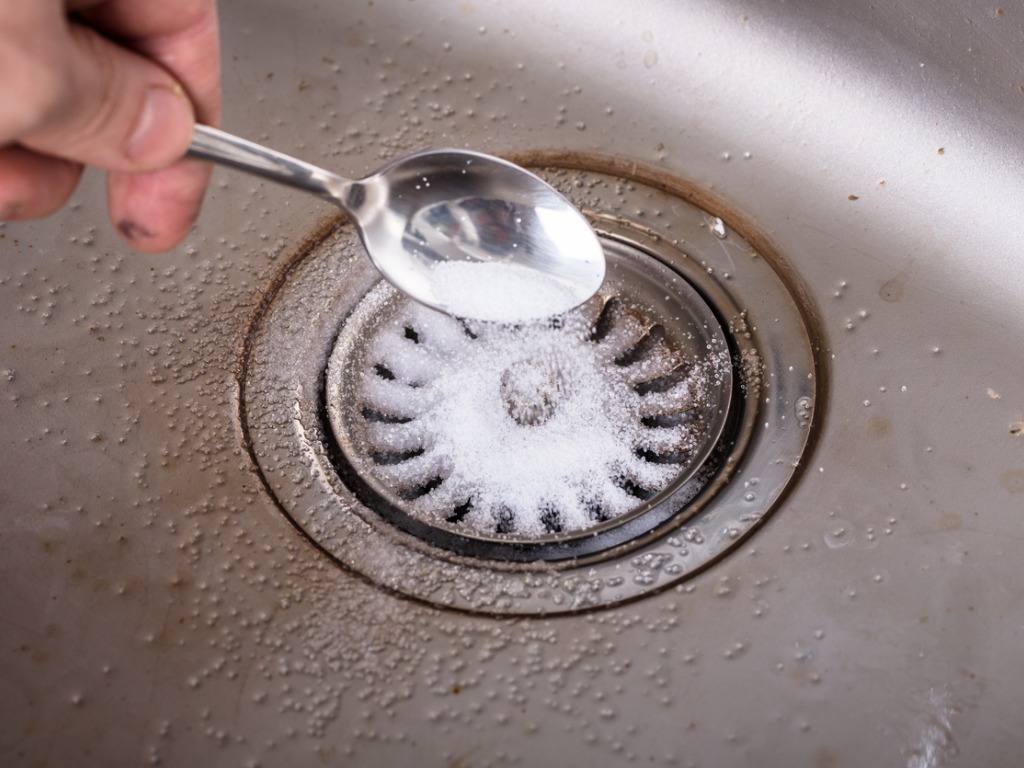What’s in Drain Cleaner, and What Happens if You Drink It?

The Bottom Line
Liquid drain cleaners contain potentially poisonous acidic or basic compounds, enzymes, and bacteria that are effective in clearing clogged drains. Since many drain cleaners contain highly concentrated corrosive chemicals, they must be used with great caution. Consumption of non-enzymatic drain cleaners can result in serious burns, permanent tissue damage, and even death.

What is in drain cleaner?
Drain cleaners contain enzymes and other strong chemicals that break down oily and greasy residues found in sink and shower drains. Enzymatic drain cleaners contain bacteria and enzymes that dissolve clogs, while non-enzymatic drain cleaners contain acidic or alkaline chemicals that break down drain debris. Common acidic ingredients in non-enzymatic drain cleaners include sulfuric and hydrochloric acids. Common alkali ingredients in drain cleaners include sodium and potassium hydroxide. Some drain cleaners generate heat when the contents are mixed together and poured down a drain. The heat helps melt grease and other oily drain-blocking substances. Because drain cleaners often contain high concentrations of powerful chemicals, these products are potentially dangerous when used incorrectly or without adequate personal protective equipment.
What happens if you drink drain cleaner?
Since many non-enzymatic drain cleaners contain corrosive chemicals, people who drink drain cleaner can experience severe chemical burns and damage to the mouth, throat, esophagus (food pipe), and stomach. Potential complications include difficulty swallowing, permanent damage to the esophagus and stomach, and even death.
Making homemade drain cleaner with baking soda and vinegar
A common homemade drain cleaner recipe involves the use of baking soda and vinegar. Baking soda is alkaline and vinegar is an acid, and carbon dioxide gas is formed when these are mixed together. Some sources suggest that the carbon dioxide gas formed in this chemical reaction could create enough pressure in a drain to dislodge debris and unclog the drain. Since drains are not airtight, the carbon dioxide gas can escape from through drain cover, so the gas generally does not build up enough pressure to release clogged drain contents. In addition, the combination of baking soda and vinegar is unlikely to be strong enough to melt away tough drain clogs due to oil and grease.
What happens if you get drain cleaner on your skin?
Drain cleaners that contain corrosive or caustic chemicals can cause pain, irritation, and burns when they come into contact with skin. In addition to spilling drain cleaner on the skin, injury can occur when a drain cleaner splashes back from the drain area. This can happen if the drain cleaner is poured from too high up, or if too much product is poured into a completely blocked drain.
What should you do if someone drinks drain cleaner, gets drain cleaner on the skin, or inhales drain cleaner fumes?
If someone drinks drain cleaner, gets drain cleaner on the skin, or inhales fumes from drain cleaner, get guidance from Poison Control immediately. Help from Poison Control is available online at www.poison.org and by phone at 1-800-222-1222. Both options are free, confidential, and available 24 hours a day.
Tammy Zhao, PharmD
Certified Specialist in Poison Information
Poisoned?
Call 1-800-222-1222 or
Prevention Tips
- Wear protective gear when using drain cleaners, including goggles and rubber gloves.
- Pour drain cleaners carefully and close to the drain to avoid splashing.
- Keep drain cleaner containers tightly closed, clean, and away from sight and reach of children.
This Really Happened
While at a party, a man’s friends played a prank on him and swapped his alcoholic drink with a drain cleaner that contained potassium hydroxide. He took a sip and experienced immediate pain and burning of his tongue, mouth, and throat. He was taken to a hospital where a breathing tube was inserted and he was treated with antibiotics and corticosteroids. He was discharged 5 days later with a prescription for opioid analgesics to treat his remaining pain. Unfortunately, his burn injuries caused permanent scarring of his tongue, which resulted in difficulty with the pronunciation of certain letters. He also developed a transient addiction to opioid pain medications (from Pederson et al., 2020).For More Information
Drain opener poisoning. Icahn School of Medicine at Mount Sinai. Accessed Feb 19, 2023.References
Poisoned?
Call 1-800-222-1222 or
Prevention Tips
- Wear protective gear when using drain cleaners, including goggles and rubber gloves.
- Pour drain cleaners carefully and close to the drain to avoid splashing.
- Keep drain cleaner containers tightly closed, clean, and away from sight and reach of children.
